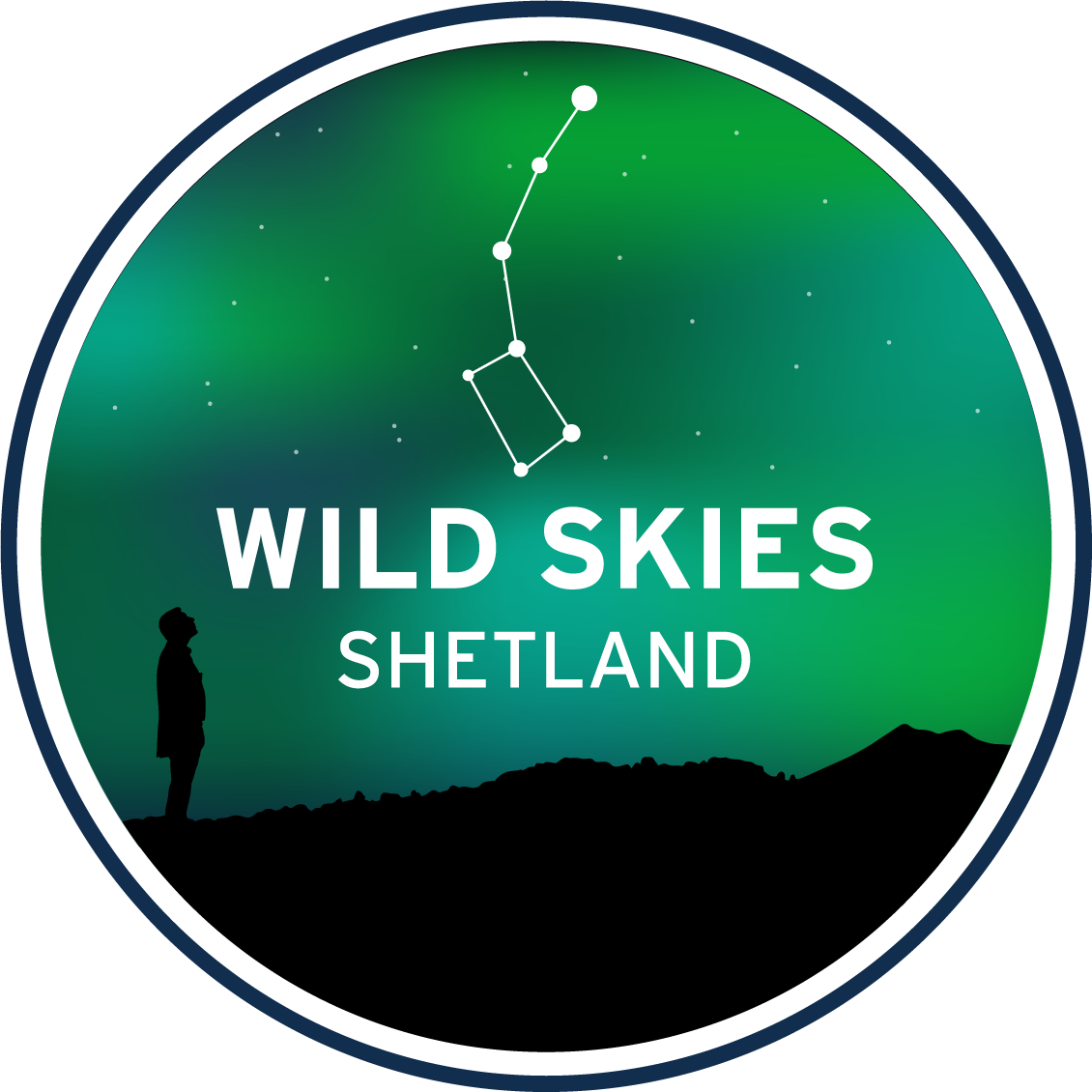00:00
Listen to an explanation of the changing position of sunrise at 60 degrees north in Unst. Written by Fabien Kuntz and read by Derek Jamieson.
©Wild Skies Shetland
Sitting on the bench looking straight out to sea you are facing east. Slightly down to your right there’s Balta and a little bit further away is Huney. Even further to your right, in a more southerly direction, you are looking down over Baltasound. Here at the top of the Keen of Hamar we find ourselves with a magnificent view out over the horizon that allows us to observe fascinating astronomical phenomena.
Sitting here you are facing directly east so the sun would rise right in front of you on two days of the year – the Spring equinox in April and the Autumn equinox in September.
Day after day after the Spring equinox the sun will rise more towards the north to your left as it approaches the summer solstice in June. Then after that it will rise slightly further south each day rising directly east at the Autumn equinox then continue to rise slightly further south each day towards Baltasound, to your right, until the winter solstice.
The word solstice actually comes from the Latin ‘sol’ meaning ‘the sun’, for example in parasol meaning to protect from the sun and ‘stice’ meaning ‘stop’ for example in armistice = to stop using weapons. So, solstice literally means ‘the day when the sun stops’ – stops going any further north at the summer solstice and stops going any further south at the winter solstice.
The impressive thing here in Shetland is that due to our high latitude these shifts between summer and winter are quite extreme. In Shetland on a summer’s day, in June or July, the sun will be above the horizon for over 18 hours but in winter, in December and January, it will only be above the horizon for less than 6 hours.
Sitting on the bench facing east if you open your arms wide, as if to greet an old friend, your hands will indicate the position of the sunrise at the two solstices. Your left hand shows where the sun will rise in midsummer and your right hand where it will rise in midwinter. Not surprising then that the lengths of the days are so different here between summer and winter.
Da Day Dawn is a traditional fiddle tune, played here by Angela Fraser. Recorded in 2021 for the Wild Skies Shetland project.
©Wild Skies Shetland
Caald Nights o’ Winter is a traditional Shetland reel. You can listen to it played by William Hunter (1902–1984), recorded in 1955, on the Tobar an Dualchais/Kist o Riches website.
© ‘Caald Nights O Winter’, William Hunter (contributor), Calum Iain MacLean, (fieldworker), ref. SA1955.114.3, The School of Scottish Studies Archive, The University of Edinburgh.
| Cookie | Duration | Description |
|---|---|---|
| cookielawinfo-checbox-analytics | 11 months | This cookie is set by GDPR Cookie Consent plugin. The cookie is used to store the user consent for the cookies in the category "Analytics". |
| cookielawinfo-checbox-functional | 11 months | The cookie is set by GDPR cookie consent to record the user consent for the cookies in the category "Functional". |
| cookielawinfo-checbox-others | 11 months | This cookie is set by GDPR Cookie Consent plugin. The cookie is used to store the user consent for the cookies in the category "Other. |
| cookielawinfo-checkbox-necessary | 11 months | This cookie is set by GDPR Cookie Consent plugin. The cookies is used to store the user consent for the cookies in the category "Necessary". |
| cookielawinfo-checkbox-performance | 11 months | This cookie is set by GDPR Cookie Consent plugin. The cookie is used to store the user consent for the cookies in the category "Performance". |
| viewed_cookie_policy | 11 months | The cookie is set by the GDPR Cookie Consent plugin and is used to store whether or not user has consented to the use of cookies. It does not store any personal data. |
